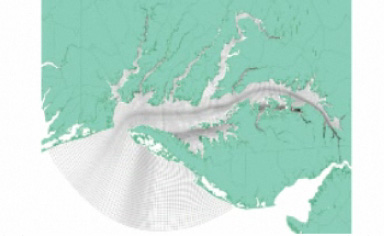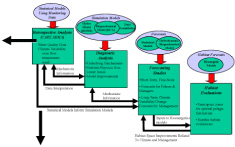|
||
Chesapeake hypoxia modeling (click image to access project description) |
In small lakes, ecosystem modeling needs only a modest connection to physics. In oceanography, models have detailed descriptions of the movement of water, the mixing of water, and the transport of water, salt and heat. Those descriptions then become the template upon which oceanographers put the ecosystem. "The early oceanographic models were described with a few simple ecological parts – nutrients, phytoplankton," says Michael. "We took a little different tack in coastal systems and modeled more details about the ecosystem – more organisms, more chemical compounds, more details of the biogeochemistry but less on the physics."
"The purpose is being able to glue it together into a dynamic processing
tool that helps us learn what's going on." |
In addition to physics, coastal scientists have other challenges that deep sea oceanographers don't always have to deal with – such as the bottom. "In the shallow systems that we operate in, the bottom can dominate," says Michael. "We have seagrasses growing, and they change the physics. They attenuate waves and tidal currents. We also and reefs where the biology dominates the physics."
Michael collaborates with colleagues whom he calls the "real" modelers. "I came out of a graduate school where we were learning a lot of details about a lot of things," he says. "Our goal is to pull that knowledge together, working with others to build a dynamic processing tool that helps us learn what's going on."



